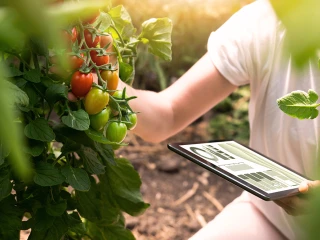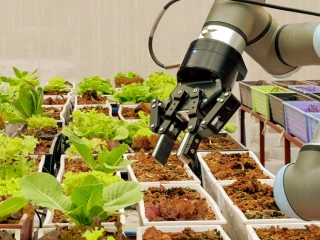Robotization and other tech developments
We need to look beyond blockchain as the only technology that is going to create big changes. Robotization, Artificial Intelligence (AI), the use of Big Data and the application of IoT also have a big impact on the way we treat food. The application of these technological developments will make food-processing companies more efficient, faster, more accurate and will ensure more certainty in the process.
Nadia Menkveld, Sector Economist at ABN AMRO, writes about the catching-up that is currently going on in the robotization in the food industry. Robotization helps with saving energy, handling raw materials more efficiently, decreasing waste and improving working conditions. Wageningen University & Research conducted research regarding application options of robots in the food chain. In the MatchX project, the possibilities of recognizing agricultural products without a bar code are being researched. This has a positive effect on decreasing plastic stickers on packaging. From my interview with Mike Poodt, business consultant innovations at Rijk Zwaan, during the 4th EU Forum, I realized that robotization is not easy. He said that Rijk Zwaan is in the process of developing seeds for a tomato that we, as consumers, will not eat until five years from now. They therefore take into account the position of technology that is possible in five years and collaborate with robot developers. What are the skills we need to develop in robots in the coming years? And how do we adapt the shape and growth of plants to this, so that a fully robotized harvest becomes feasible?


